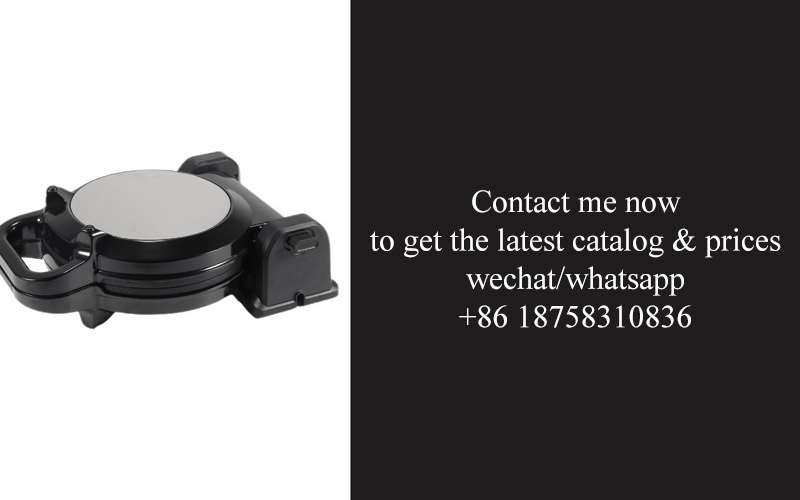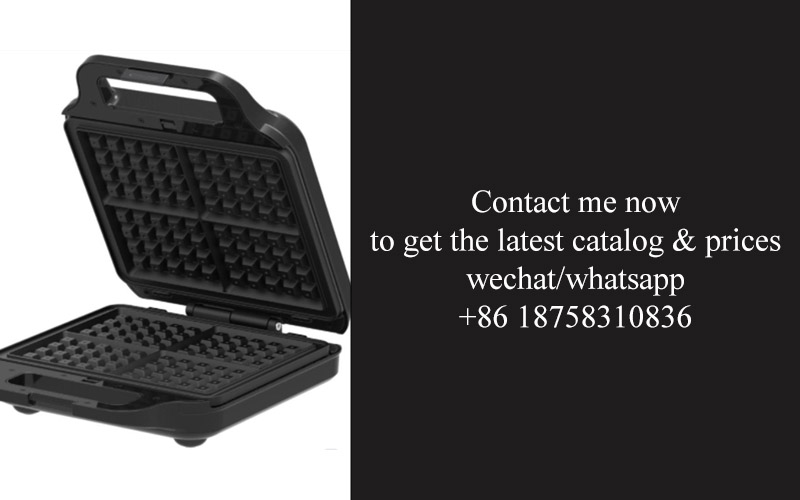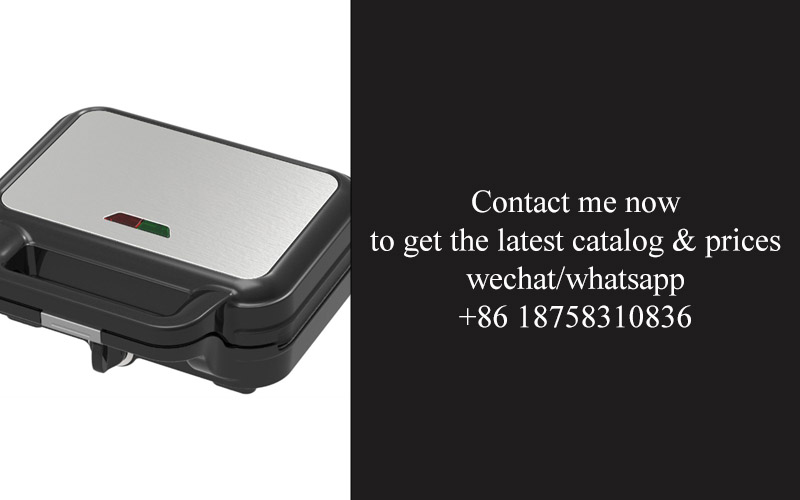Address
304 North Cardinal
St. Dorchester Center, MA 02124
Work Hours
Monday to Friday: 7AM - 7PM
Weekend: 10AM - 5PM
Address
304 North Cardinal
St. Dorchester Center, MA 02124
Work Hours
Monday to Friday: 7AM - 7PM
Weekend: 10AM - 5PM

In the ever-evolving landscape of kitchen appliances, a quiet revolution has been taking place within the construction of sandwich plates. This shift, largely driven by the integration of metal stamping technology, has not only reshaped the way these essential cooking tools are made but has also opened new avenues for innovation and efficiency. As we delve into the impact of this transformation, it’s clear that the future of sandwich plates is poised to bring about significant changes to the culinary experience.
The kitchen has always been a hub of innovation, and with the rise of modern technology, it’s no surprise that kitchen appliances have evolved in remarkable ways. One such innovation that has quietly made waves in the industry is the integration of metal stamping into the construction of sandwich plates. This technique, once reserved for automotive and aerospace industries, has found a new home in the heart of our kitchens.
Metal stamping, a process that involves shaping metal sheets into complex shapes using presses, has become a game-changer for sandwich plates. These plates, which are designed to cook multiple layers of food simultaneously, have seen a transformation in their design and durability thanks to this innovative technique.
What makes integrated metal stamping so appealing for sandwich plates is its precision and efficiency. The ability to create intricate patterns and uniform thicknesses ensures that the plates can distribute heat evenly, leading to better cooking results. Moreover, the strength and rigidity of the stamped metal make these plates more resistant to warping and bending, which can be a common issue with traditional materials.
As the demand for high-performance kitchen appliances has surged, manufacturers have been on the lookout for materials that can withstand the rigors of everyday use. Metal stamping has stepped up to the plate, so to speak, offering a solution that is both cost-effective and high-quality. The process allows for mass production without compromising on the quality of each individual plate, making it an ideal choice for large-scale kitchen appliance manufacturing.
The market has responded positively to this technological advancement. Consumers are increasingly drawn to appliances that promise efficiency, convenience, and longevity. Integrated metal stamping has enabled sandwich plates to meet these expectations, as they are not only robust but also stylish and easy to maintain.
One of the standout features of metal-stamped sandwich plates is their ability to handle a variety of cooking methods. Whether it’s grilling, searing, or slow cooking, these plates can withstand high temperatures and maintain their structural integrity. This versatility is a major selling point for kitchen appliance companies looking to offer a comprehensive cooking solution.
The environmental benefits of metal stamping cannot be overlooked either. By using metal, which is highly recyclable, manufacturers are contributing to a more sustainable approach to kitchen appliance production. This eco-friendly aspect is becoming increasingly important to consumers who are conscious of their carbon footprint and the impact of their purchases on the planet.
Innovation in the kitchen appliance industry is a continuous process, and the integration of metal stamping into sandwich plates is just one example of how technology is reshaping the landscape. As more companies embrace this technique, we can expect to see a range of new and exciting products hit the market.
Behind the scenes, engineers and designers are pushing the boundaries of what is possible with metal stamping. They are experimenting with different metals, coatings, and heat treatments to enhance the performance and longevity of sandwich plates. This focus on innovation is driving the industry forward and setting new standards for quality.
As the demand for advanced kitchen appliances grows, so does the competition. Companies are now not just competing on price or brand recognition but on the technology and materials they use. Integrated metal stamping has given them a significant edge in this race.
The rise of integrated metal stamping in kitchen appliances is a testament to the power of cross-industry collaboration. By borrowing techniques from other sectors, the kitchen appliance industry is able to offer products that are not only functional but also forward-thinking. It’s this kind of innovation that will continue to redefine what we expect from our kitchen appliances.
In conclusion, the integration of metal stamping into sandwich plates is a significant development that is reshaping the kitchen appliance market. Its precision, durability, and eco-friendliness make it a compelling choice for manufacturers and consumers alike. As the industry continues to evolve, it’s clear that the future of kitchen appliances is bright, with metal stamping playing a pivotal role in driving this progress.

Sandwich plates, often overlooked in the grand scheme of kitchenware, play a surprisingly vital role in modern cooking. These metal devices, designed with a series of interlocking slots and ridges, are a marvel of culinary engineering that allows for precise heat distribution and even cooking.
Their sleek, compact design doesn’t give away the technological sophistication that lies beneath the surface. The concept of sandwich plates is straightforward yet ingeniously executed, and they’ve become an essential tool in professional kitchens worldwide. Whether it’s a professional chef or a home cook, the sandwich plate offers a unique way to cook foods like meats, vegetables, and even desserts.
The construction of a sandwich plate is both simple and complex. At its core, it’s a flat metal plate with a series of raised patterns that form a network of ridges and slots. This design creates an even distribution of heat, ensuring that food cooks uniformly from top to bottom. The ridges trap heat and the slots allow for steam to escape, preventing food from becoming soggy.
One of the key advantages of sandwich plates is their versatility. They can be used to cook a wide variety of dishes, from classic French gratins to hearty casseroles. The ability to achieve a crispy top while keeping the interior moist and tender is a game-changer for those looking to elevate their cooking skills.
In the realm of cooking, texture is just as important as flavor. Sandwich plates help to create a distinct contrast in texture between the outer layers and the inner meat or vegetable filling. The edges of the food are caramelized and crunchy, while the center remains tender and juicy. This dual-texture effect is a testament to the clever engineering behind sandwich plates.
The cooking process itself is also enhanced by the sandwich plate. The interlocking design means that food is pressed against the plate, which not only helps to sear the exterior but also allows for the fat and juices to be rendered away from the surface, creating a beautifully browned crust. This technique is particularly useful when cooking meats, such as pork or beef, which can often become dry if overcooked.
Beyond their use in the kitchen, sandwich plates have also found their way into the world of baking. They can be used to bake bread with a perfectly crispy crust and a soft, airy interior. The same principle of steam release and heat distribution applies, resulting in a product that is both visually appealing and deliciously satisfying.
In terms of maintenance, sandwich plates are a breeze to clean. Their flat surfaces and the lack of intricate crevices mean that food particles and residue are less likely to stick, making cleanup a much quicker process. This is especially beneficial in a busy kitchen environment where time is of the essence.
While sandwich plates are a staple in professional kitchens, their popularity is growing among home cooks as well. There’s something satisfying about using a tool that not only looks sleek and modern but also performs exceptionally well. The sandwich plate’s ability to deliver a restaurant-quality finish at home is a testament to the power of smart design.
In conclusion, sandwich plates may seem like a simple addition to the kitchen arsenal, but their impact on cooking is profound. From providing uniform heat distribution to creating mouthwatering textures, these metal wonders have earned their place in the hearts of chefs and home cooks alike. As the culinary world continues to evolve, it’s likely that the sandwich plate will continue to play a crucial role in shaping the future of cooking.

Metal stamping has long been a staple in the manufacturing of kitchen appliances, and its evolution has been a game-changer for sandwich plate construction. The process, which involves shaping metal sheets into precise shapes using dies and presses, has allowed for the creation of durable and efficient components. Here’s a closer look at the innovations that have shaped this crucial aspect of kitchen appliance design.
The advent of advanced materials has revolutionized sandwich plate construction. Modern metals, such as high-strength stainless steel and lightweight aluminum alloys, offer a perfect blend of strength, durability, and heat resistance. These materials not only enhance the performance of the sandwich plates but also contribute to the overall efficiency of the appliances they are used in.
Precision engineering has taken center stage in the development of metal stamping for sandwich plates. The use of computer-aided design (CAD) and computer-aided manufacturing (CAM) systems has allowed for the creation of intricate and complex shapes with unparalleled precision. This precision ensures that the sandwich plates fit perfectly within the appliance, reducing the risk of leaks and enhancing the cooking process.
One of the most significant innovations in metal stamping for sandwich plates is the introduction of multi-layered constructions. These plates are built with alternating layers of metal, typically stainless steel and aluminum, which serve different purposes. The stainless steel layers provide strength and durability, while the aluminum layers offer excellent heat conductivity. This innovative design not only improves the efficiency of the appliance but also extends its lifespan.
The integration of insulation within the metal stamping process has been a breakthrough for sandwich plate construction. By incorporating insulating materials between the metal layers, manufacturers can create plates that retain heat more effectively, reducing energy consumption and improving cooking performance. This insulation also helps to prevent warping and distortion, which can compromise the integrity of the appliance.
The ability to customize metal stamping for sandwich plates has opened up new possibilities in kitchen appliance design. From different shapes and sizes to specialized designs for specific cooking applications, the flexibility of metal stamping allows for a wide range of options. This customization can cater to the diverse needs of consumers, from professional chefs to home cooks.
The development of automated stamping machines has streamlined the production process for sandwich plates. These machines can handle large volumes with high precision, reducing the time and labor required to produce each plate. Automation also minimizes the risk of human error, ensuring consistent quality across all products.
Innovation in the finishing processes of metal stamping has also had a significant impact on sandwich plate construction. Techniques such as electroplating and anodizing have been used to improve the appearance and longevity of the plates. Electroplating involves applying a thin layer of metal to the surface, which can enhance the aesthetic appeal and corrosion resistance. Anodizing, on the other hand, creates a durable, protective oxide layer on the aluminum, making it even more resistant to heat and chemicals.
The integration of smart technology into metal stamping for sandwich plates is another area of innovation. By embedding sensors and microcontrollers within the plates, manufacturers can create smart kitchen appliances that provide real-time feedback on cooking conditions. This technology not only improves the cooking experience but also allows for predictive maintenance, reducing downtime and extending the life of the appliance.
The environmental impact of manufacturing processes has also been a focus of innovation in metal stamping for sandwich plates. The development of more sustainable practices, such as using recycled materials and reducing energy consumption, has made the production of these components more eco-friendly. This commitment to sustainability is not only beneficial for the environment but also resonates with environmentally conscious consumers.
In conclusion, the innovations in metal stamping for sandwich plate construction have transformed the kitchen appliance industry. From the materials used to the production processes and the final design, these advancements have led to more efficient, durable, and user-friendly appliances. As technology continues to evolve, we can expect even more exciting developments in the future of sandwich plate construction.

Integrated metal stamping has revolutionized the construction of sandwich plates, offering a plethora of advantages that enhance both performance and aesthetic appeal. Here’s a closer look at these benefits:
The precision and consistency of metal stamping techniques allow for the creation of sandwich plates with exacting specifications. Each component is meticulously shaped and sized, ensuring a uniformity that’s nearly impossible to achieve through traditional manufacturing methods. This level of precision translates into a more reliable and durable end product.
The process of metal stamping for sandwich plates is highly efficient, reducing manufacturing time and costs. By utilizing automated machinery, manufacturers can produce a large number of sandwich plates in a short span, making it an ideal solution for high-volume production. This efficiency not only benefits the manufacturers but also ensures that consumers have access to high-quality sandwich plates at competitive prices.
One of the standout advantages of integrated metal stamping is the adaptability it offers. The process can be easily modified to accommodate various design changes, from slight alterations in size to complete redesigns. This flexibility allows for innovation in the kitchen appliance industry, as manufacturers can continuously evolve their sandwich plate offerings to meet emerging consumer demands.
The strength of sandwich plates constructed through metal stamping is unparalleled. The metal sheets are formed into plates with reinforced edges, creating a robust structure that can withstand heavy usage in kitchens. This durability ensures that the sandwich plates are less likely to warp or bend over time, providing a longer lifespan and reducing the need for frequent replacements.
The aesthetic value of metal-stamped sandwich plates cannot be overstated. The clean, sharp lines and uniform finish that result from the stamping process contribute to a modern and sleek look. This visual appeal is especially important in contemporary kitchen designs, where the appliances and utensils are often chosen for their ability to complement the overall style of the space.
In terms of material choice, metal stamping for sandwich plates opens up a world of possibilities. Metals like stainless steel, aluminum, and titanium can be used, each offering unique properties that may enhance the performance of the sandwich plate. For instance, stainless steel is known for its corrosion resistance and easy maintenance, making it a popular choice for professional kitchens.
The process of metal stamping is inherently green and sustainable. By minimizing waste and using materials that are easy to recycle, the environmental impact of producing sandwich plates is significantly reduced. This eco-friendly aspect is increasingly important to consumers who are more conscious of the sustainability of the products they purchase.
Ease of cleaning is a critical factor in kitchen appliance design, and metal-stamped sandwich plates excel in this area. The smooth surfaces created by the stamping process are less likely to harbor bacteria and can be easily sanitized. This not only makes the sandwich plates safer for use but also simplifies the cleaning process for homeowners.
Finally, the integration of metal stamping into sandwich plate construction allows for the inclusion of smart features. By incorporating technology into the metal stamped components, manufacturers can create sandwich plates that offer advanced functionalities such as temperature control and smart connectivity. This integration of form and function is a testament to the versatility of metal stamping technology in the kitchen appliance industry.

In the evolving landscape of kitchen appliances, several industry trends and market insights have emerged, shaping the future of sandwich plate construction and usage. Here’s a glimpse into what’s currently shaping the market:
Technological Advancements in Metal StampingThe integration of advanced technologies in metal stamping processes has led to more precise and efficient production methods. Innovations such as computer numerical control (CNC) machines have allowed for intricate designs and enhanced material properties in sandwich plates.
Sustainability FocusAs environmental concerns grow, there’s a significant shift towards sustainable practices in the kitchen appliance industry. Metal stamping for sandwich plates offers a recyclable and durable solution, aligning with the global push for eco-friendly products.
Customization and PersonalizationConsumers today are seeking more personalized experiences, and the kitchen appliance market is responding by offering customizable sandwich plates. This trend allows for a wider range of designs, sizes, and features tailored to individual preferences.
Smart Kitchen IntegrationThe rise of smart home technology is influencing the design of kitchen appliances, including sandwich plates. Integration with smart systems allows for remote control, energy efficiency monitoring, and seamless connectivity with other kitchen devices.
Global Market ExpansionThe demand for kitchen appliances, particularly sandwich plates, is not confined to any single region. There’s a global expansion, with emerging markets showing significant growth potential. This expansion requires a diverse approach to product design and marketing.
Urbanization and Compact LivingUrbanization has led to a surge in compact living spaces, influencing the design of kitchen appliances. Sandwich plates that are space-saving, easy to install, and maintain are becoming increasingly popular among city dwellers.
Health and WellnessThe health and wellness trend is also playing a role in the kitchen appliance market. Consumers are looking for appliances that can help them prepare healthier meals, and sandwich plates that offer adjustable temperature settings and non-toxic materials are gaining traction.
Energy EfficiencyEnergy efficiency is a key factor in the appliance market, and sandwich plates are no exception. Manufacturers are focusing on developing plates that consume less energy while maintaining cooking performance, appealing to environmentally conscious consumers.
Regulatory ChangesRegulatory changes in various countries are affecting the kitchen appliance market. New standards for safety, energy consumption, and emissions are prompting manufacturers to adapt their production processes and product designs.
Consumer Behavior ShiftsConsumer behavior is continually evolving, with a growing emphasis on convenience, ease of use, and aesthetic appeal. Sandwich plates that combine functionality with a sleek design are more likely to capture the interest of today’s consumer.
Innovation in MaterialsInnovation in materials is a driving force behind the advancements in sandwich plate construction. New alloys and coatings are being developed to improve durability, heat retention, and resistance to corrosion.
Market Saturation and CompetitionThe market for kitchen appliances, including sandwich plates, is becoming increasingly saturated, leading to heightened competition. Manufacturers must differentiate their products through unique features and superior quality to stand out in a crowded marketplace.
Collaborations and PartnershipsTo stay ahead in the market, many companies are forming collaborations and partnerships. These alliances can lead to shared research and development, access to new technologies, and a stronger presence in key markets.
Customer Service and SupportAs competition intensifies, customer service and support become crucial. Companies that invest in excellent customer experiences, including warranty services and user-friendly product information, are likely to build long-term customer loyalty.

In the realm of kitchen appliances, the integration of metal stamping into sandwich plate construction has revolutionized the industry. Let’s delve into some notable case studies that showcase successful implementations of this innovative technology.
Modern Kitchenware: The company Modern Kitchenware has been at the forefront of incorporating integrated metal stamping into their sandwich plates. Their design, which features a sleek, stainless steel exterior and a durable aluminum core, has garnered a strong following. The seamless transition between materials not only enhances the aesthetic appeal but also ensures a longer lifespan for the product.
Gourmet Appliances: Gourmet Appliances has leveraged metal stamping to create a line of high-end sandwich presses. Their innovative sandwich plates are designed with intricate patterns that not only add a touch of elegance but also improve heat distribution. The case study highlights how these plates have become a staple in gourmet kitchens and bistros.
Smart Kitchen Solutions: Smart Kitchen Solutions took a different approach by integrating smart technology into their sandwich plates. The metal stamping process allowed for the embedding of temperature sensors, which provide precise cooking control. This case study explores how the integration of metal stamping has not only improved the cooking experience but also opened up new possibilities for smart kitchen innovations.
Eco-Friendly Kitchens: Eco-Friendly Kitchens focused on sustainability when developing their sandwich plates. By using recycled metals and eco-friendly stamping techniques, they were able to create a product that is both durable and environmentally responsible. The case study examines the market reception and the positive impact on the brand’s reputation.
Global Expansion: A multinational kitchenware brand successfully expanded its market reach by adopting integrated metal stamping for sandwich plates. The case study details how the uniformity and precision of the stamping process allowed for consistent quality across different manufacturing locations, facilitating a seamless global rollout.
Health and Safety: A leading manufacturer of kitchen appliances addressed health and safety concerns with their metal-stamped sandwich plates. The case study discusses how the stamping process minimized the risk of bacteria growth and ensured a non-porous surface that is easy to clean. This focus on health has become a significant selling point for the brand.
Customization: Customization is key in the kitchen appliance market, and one company has thrived by offering tailored sandwich plates through metal stamping. The case study shows how this flexibility has allowed the company to cater to niche markets and individual preferences, leading to a diverse product line that stands out in a crowded marketplace.
Performance Enhancement: A well-known brand enhanced the performance of their sandwich plates by integrating metal stamping. The case study reveals how the stamping process improved heat retention and cooking efficiency, resulting in a product that delivers exceptional performance compared to traditional sandwich makers.
Innovation and Design: Innovation and design are at the heart of a company’s success, and one brand has made a name for itself by combining these elements in their metal-stamped sandwich plates. The case study explores how the company’s commitment to design has led to a product that is both functional and visually appealing.
Market Leader: Finally, a market leader in kitchen appliances has used integrated metal stamping to maintain its competitive edge. The case study details how their investment in this technology has allowed them to stay ahead of the curve, offering consumers cutting-edge products that meet the evolving demands of the market.
These case studies demonstrate the versatility and effectiveness of integrated metal stamping in sandwich plate construction, highlighting the numerous benefits it brings to both manufacturers and consumers.

In the ever-evolving world of kitchen appliances, sandwich plates have emerged as a key component, offering both functionality and aesthetic appeal. As we look to the future, several trends and advancements are poised to shape the landscape of sandwich plates, promising a blend of innovation and convenience.
The integration of smart technology is one such trend that’s expected to revolutionize sandwich plates. Imagine a sandwich plate that not only cooks your meal but also adjusts its settings based on the ingredients you’ve added. This level of customization and intelligence could become the norm, making cooking a more interactive and tailored experience.
Another exciting development involves the use of sustainable materials. With growing environmental concerns, manufacturers are turning to eco-friendly alternatives for sandwich plates. Biodegradable plastics and recycled metals are just a couple of examples of materials that could become more prevalent, aligning the future of sandwich plates with a greener planet.
The rise of modular design is also a trend to watch. Modular sandwich plates could be the answer to a kitchen that’s as versatile as the chef’s imagination. These plates could be and reconfigured to suit different cooking methods or to accommodate various sizes of cookware, offering a level of adaptability that’s hard to match with traditional plates.
Personalization is another area that’s set to expand. Customizable sandwich plates could allow users to choose from a variety of designs, materials, and even cooking functions. From a sleek, modern look to a rustic, vintage feel, the future of sandwich plates could cater to the unique tastes and preferences of individual consumers.
In terms of functionality, advancements in heat distribution are anticipated. The future sandwich plates might feature innovative heating elements that ensure even cooking across the entire surface, reducing the risk of cold spots and overcooked edges. This would be particularly beneficial for those who value precision in their cooking.
The integration of safety features is also a critical aspect of the future sandwich plates. With smart sensors and automatic shut-off mechanisms, these plates could offer peace of mind to users, preventing accidents and ensuring that food is cooked to perfection every time.
Additionally, we might see a surge in the development of multi-functional sandwich plates. These could include not only cooking functions but also features like built-in timers, temperature control, and even connectivity to smart home systems. The idea is to create a kitchen appliance that not only serves a single purpose but can be a central part of a cohesive kitchen ecosystem.
The future of sandwich plates also hinges on the user experience. Imagine a plate that not only cooks your food but also provides real-time feedback, such as nutritional information or cooking progress updates. This kind of interactivity could transform the way we think about kitchen appliances, making them more engaging and informative.
In the realm of energy efficiency, sandwich plates are likely to become even more eco-conscious. With the push for energy-saving technologies, the future plates could incorporate features that reduce power consumption without compromising on performance. This would not only benefit the environment but also save consumers money on their utility bills.
As we delve deeper into the future, it’s also important to consider the impact of global culinary trends on sandwich plates. As people become more adventurous with their food, sandwich plates might adapt to cater to a wider range of flavors and cooking styles, from traditional recipes to international cuisines.
Lastly, the role of technology in the design and manufacturing process cannot be overlooked. Automation and robotics are likely to play a significant part in the production of sandwich plates, leading to higher quality, consistent products and potentially reducing costs.
In conclusion, the future of sandwich plates is bright with possibilities. From smart technology and sustainable materials to modular design and personalized features, these appliances are set to become an integral part of the modern kitchen, offering convenience, efficiency, and a touch of personal flair. Whether you’re a seasoned chef or a culinary novice, the future sandwich plate promises to be an exciting and innovative tool in the kitchen.

In the realm of kitchen appliances, the integration of metal stamping technology has revolutionized the way we think about sandwich plates. This innovative process has not only enhanced the functionality of these kitchen essentials but also opened up new avenues for design and durability. Let’s delve into the subtle yet profound impact of integrated metal stamping on the world of kitchen appliances.
The precision of metal stamping allows for intricate patterns and shapes that were once impossible to achieve through traditional manufacturing methods. This has led to the creation of sandwich plates with unique features that cater to a variety of culinary needs. From non-stick surfaces to ergonomic handles, the possibilities are virtually endless.
One of the most notable advantages of this technology is its ability to create lightweight yet robust sandwich plates. The thin, yet strong metal components are designed to withstand high temperatures and frequent use without losing their structural integrity. This not only extends the lifespan of the appliance but also ensures that users can rely on their sandwich plates for years to come.
The aesthetic appeal of metal-stamped sandwich plates cannot be overstated. The sleek, modern designs not only complement contemporary kitchen aesthetics but also inspire a sense of culinary excitement. Home cooks and chefs alike are drawn to the visual appeal of these appliances, which can be a subtle yet powerful motivator for preparing meals at home.
Innovation in the kitchen is not just about the latest gadgets; it’s also about the seamless integration of technology that makes everyday tasks more efficient. Metal stamping has allowed manufacturers to create sandwich plates that are not only visually stunning but also easy to clean and maintain. The smooth, seamless surfaces of these plates are a testament to the precision and skill involved in the stamping process.
The environmental impact of kitchen appliances is also a growing concern for consumers and manufacturers alike. Metal stamping offers a more sustainable approach to producing sandwich plates. By using less material and reducing waste, this technology contributes to a greener footprint. Additionally, the longevity of metal-stamped sandwich plates means fewer appliances end up in landfills, further reducing the environmental impact.
The rise of smart kitchens has been a game-changer in the appliance industry, and metal stamping has played a significant role in this transformation. With the ability to integrate sensors and other smart technology into the design of sandwich plates, users can now monitor cooking temperatures, cooking times, and even receive notifications on their smartphones. This integration of technology with traditional appliances is a clear indication of where the industry is heading.
As the demand for customization in kitchen appliances grows, metal stamping has become a key factor in meeting these needs. Consumers today are looking for appliances that not only perform well but also reflect their personal style. Metal stamping allows for personalized designs and unique features that can set a kitchen apart from the rest.
The impact of integrated metal stamping on the kitchen appliance industry is also evident in the rise of modular appliances. By creating components that can be easily replaced or upgraded, manufacturers are enabling homeowners to keep their kitchens current without a complete overhaul. This modular approach is made possible by the versatility and precision of metal stamping technology.
In the realm of innovation, the possibilities with metal stamping are virtually limitless. As manufacturers continue to explore new designs and functionalities, we can expect to see even more exciting advancements in sandwich plates and other kitchen appliances. The future holds a world where appliances are not just tools but also works of art that enhance the overall kitchen experience.
In conclusion, the influence of integrated metal stamping on kitchen appliances is multifaceted. It has improved the durability, aesthetics, environmental friendliness, and functionality of these essential tools. As the industry evolves, we can look forward to a future where the kitchen is not just a place to cook but a space that reflects our personal tastes and technological aspirations.